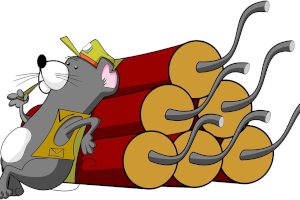3 Mistakes Building Product Manufacturers Make with Specifiers
- < Product Manufacturer’s LEED Certification Update and Specification Strategies
- > Working Together: Partnership Between Resiliency and Sustainability
“If you don’t know where you’re going, you’ll end us someplace else,” said Yogi Berra. The baseball legend was one of only five players ever to win the MVP award at least three times. He became one of the best players in the league and manufacturers can learn a lot from his wisdom. Sometimes building product manufacturers get lost in the day to day circus of life. There’s quotas to meet, fires to put out, egos to massage, and a host of other baloney.
Today we’ll review 3 mistakes that manufacturers make with specifiers, architects, contractors, engineers, and other design professionals. These critical mistakes can cost manufacturers jobs, money, and expensive therapy sessions.
Mistake #1: You Don’t Listen
The worst building product reps are usually poor listeners. Your job is to listen to the specifier, project architect, contractor, etc. and find out what the customer needs. Listen attentively to every detail, every concern, and focus on every signal, both verbal and non-verbal. Even casual off-hand remarks by an architect can provide a wealth of information.
When you have face time with a decision maker, don’t waste it daydreaming about the vacation your about to take. If the architect sounds like a monotone public service announcement, repeating what he told you a million times before, go with the flow and listen again. Smart product reps also take notes. Record information with a pen and pad, your smart phone, or if you’re lucky like me you have a built in photographic memory.
When you meet the principal of the firm who offers you the opportunity to show him how your composting toilet would work in a prison of two thousand bloodthirsty inmates, show him respect and turn off your cell phone. A ringing cell phone may distract him from your toilet demonstration and possibly provoke angry inmates who want to call their loved ones or make bomb threats directed at the local pickled herring factory nearby.
Mistake #2: You Didn’t Solve the Problem
Every manufacturer wants to get specified. Except for the ones at trade shows who sit in their chairs and refuse to stand up, smile, or engage anyone passing their booth while the crickets chirp. Yes, you know the product reps I’m talking about. The geezer in a red golf polo shirt playing Angry Birds on his iPhone or texting bad jokes to the guys back in the warehouse.
Smart product reps know that they need to solve a problem. Every project has obstacles to overcome. Is the building project on a tight budget? Is the owner clinically insane? Is the building site a former radioactive pit mine that glows like a supernova? Does your Health Product Declaration look like a recipe to make napalm milkshakes?
Product reps must address the customer’s needs. What is the main obstacle to specifying your product? Is it cost, maintenance, color, warranty, or delivery time? How do you get your product in the office master specification? You better solve the architect’s problem or you’re burnt toast.
Mistake #3: You Are Not Proactive!
Quit reactionary selling. Don’t wait for the project to be issued and then call the specifier to get them to add an addendum adding your product. Get involved in the process early. Stay calm, be cool, and maintain a proactive approach.
Don’t waste your precious time calling on customers who will never use your product. Don’t squander sales calls with BS. Get to the point. Be polite, be engaging, and above all, be sincere. Don’t ever lie to an architect about your product or you’ll be sent to specification hell. And believe me you don’t want to go there or you might end up in the crappy trade show booth with the guy in the red polo shirt, patting each other on the back, and blabbing on about the good old days when you were cleaning latrines on the North Korean DMZ.
Be persistent, stay in touch with all the players involved, and follow the project to the end. And if you didn’t get your product specified, then you better learn from your loss. Failure can be a great teacher. The great masters say there is little learning from success. But to fail gloriously can offer important life lessons. When you hit rock bottom, the only place to go is up.
Overall, building product manufacturers should follow these three simple tips to improve their chances at product specification. Online AIA courses, 3 part guide specs, and a large marketing budget can all help but the basics of the game never change. What mistakes do you avoid when working with specifiers?
For more information or to discuss the topic of this blog, please contact Brad Blank





